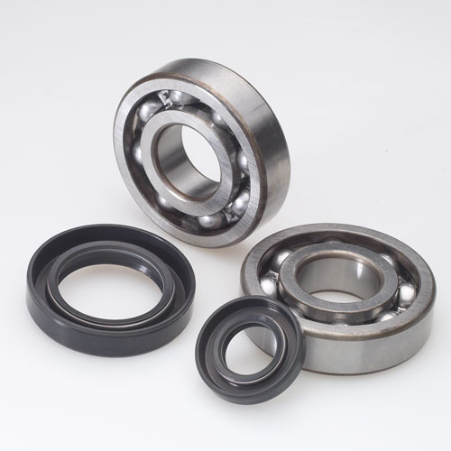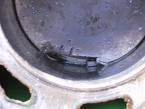
quality. service. price.
Vacuum Leaks

I see hundreds of cylinders and crankshafts every year and It's my experience that one of the most common causes of engine failures are air leaks. Air leaks will introduce unwanted air into the fuel charge and make your machine run lean. Think of it like this. If you build a fire, it will burn at a steady pace. If you blow on that fire, it will burn much faster and hotter. Your engine works the same way. An engine is nothing more than a fancy air pump. A lean engine is a ticking time bomb. It won't fix itself and it will fail. Excessive engine temperatures will melt and burn holes in pistons, seize lower-end bearings, peel the coatings off cylinders and sometimes throw the connecting rod through the cases.

How can I tell if I have a vacuum leak?
- When you rev up your engine, does it wind back down to an idle slowly?
- When you start your bike, does the engine race and have an unsteady idle?
- Does the engine smoke excessively and does the smoke smell like gear oil?
- Is the engine hard to start?
- Does the engine make a loud banging sound at full throttle?
- When you start the engine, does it run for a few minutes and then die?
- Does oil come out of the gear case over-flow tube?
These are all symptoms of a vacuum leak!!!
So how do I know for sure?
The only way to tell for sure is to do a vacuum test. Remove the pipe and carb. Plug the exhaust flange with an expandable rubber freeze plug. You can get this at any automotive parts store. Next, plug the intake boot with a steel freeze plug with a hole in the center. Tighten the intake clamp. Insert the vacuum pump into the hole on the intake plug and apply 9 inches of vacuum. If it leaks down to less than 7 inches in a few minutes, you have a vacuum leak.
How do I know where the leak is?
The most common place for an air leak to start is the crankshaft seals. Remove the ignition cover and take a look inside . Oil inside the ignition housing is evidence of a crank seal leak. Did the engine smoke and smell like gear oil ? Is oil coming out of the gear case vent tube? If so, you have a leaking seal on the clutch side or a leak at the case between the crankcase and gear case. Other places to look for a vacuum leak are the cylinder base gasket, reed gasket, carb boot or the carb itself. The important thing to remember here, is to fix the leak as soon as you find it. Seals and gaskets are cheap. Pistons, crankshafts and sleeves are expensive. It's a good idea to change the crank seals every 2 years or so. The constant exposure to fuel, heat, oil and high RPMs has a tendency to dry them out .
If you have a seal leak but don't want to tackle a lower end rebuild, give me a call. I'll be glad to help.
© 1983-Present by Ken OConnor Racing. All rights reserved.


